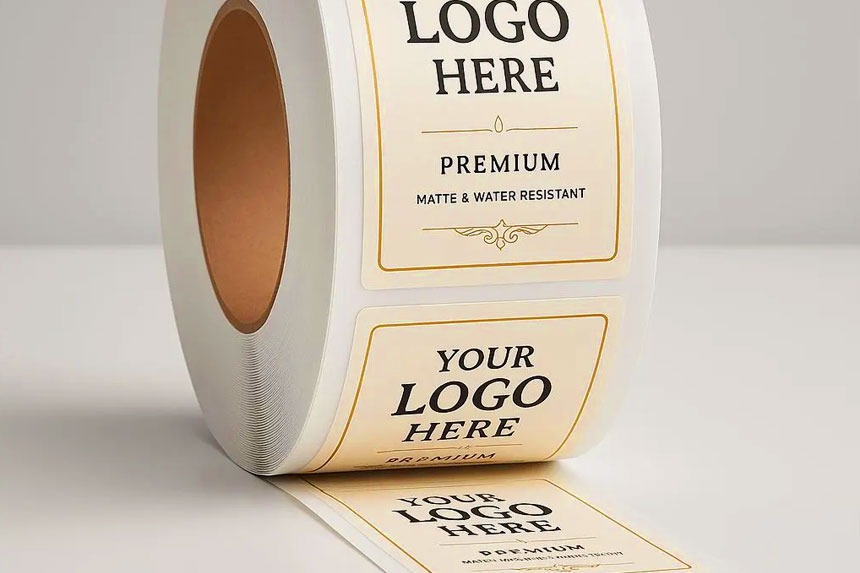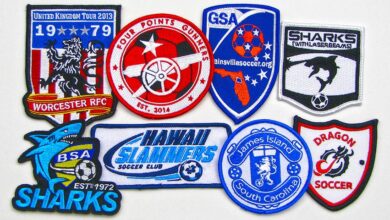How to Source Affordable Die-Cut Roll Labels for Product Packaging Without Sacrificing Quality

You want affordable die-cut roll labels for product packaging but worry about hidden costs. The key is understanding what drives pricing and using that knowledge to your advantage. Die costs typically run $150 to $350 for standard shapes, while per-label costs range from $0.03 to $0.30 depending on materials and volume. Smart design choices and strategic sourcing can cut your total cost by 30 to 50 percent.
Most small brands overspend on labels because they don’t know which levers to pull. You might choose a complex shape that requires expensive tooling, or order small batches that keep your per-unit cost high. This guide shows you exactly how to balance quality, design, and cost so your professional branding stands out without draining your budget.
What drives the cost of die-cut roll labels
Three main factors determine your final price. Label tooling cost comes first because custom shapes need specialized dies to cut your design. Material choice matters next, as paper costs less than vinyl or specialty films. Finally, label printing method and volume affect how much you pay per label.
Die costs vary based on shape complexity. Simple shapes cost around $150 on average, while intricate designs with curves and corners can exceed $1,000. This one-time expense gets spread across your order, so larger runs lower your cost per label significantly. A 5,000-label order might add just three cents per label for tooling, while a 500-label batch could add thirty cents. Understanding this die cutting process helps you make smarter decisions about shape selection, whether you’re ordering custom bakery stickers and labels for small bakeries or branding a beverage line.
Label facestock and adhesive type create the next pricing layer. Paper labels run $0.03 to $0.10 each, while durable vinyl labels cost $0.10 to $0.30 per unit. Your product environment determines which material works best. Indoor products can use basic paper, but outdoor or refrigerated items need waterproof materials that resist moisture and temperature changes. The pressure-sensitive adhesive backing ensures labels stick properly to different surfaces.
How to design die-cut labels to reduce cost
Shape simplicity saves money immediately. Rectangles, circles, and ovals use standard dies that many label printers already own, eliminating custom tooling charges. Each additional curve or corner in your design increases die complexity and cost. This principle applies whether you need vinyl roll labels for outdoor use or paper roll labels for indoor products.
You can still create visual interest without complex cuts. Use rectangular labels with rounded corners instead of star shapes or intricate silhouettes. Roll-type labels cost less than cut-to-size options, so keeping designs that work on rolls rather than individual sheets cuts expenses. Focus your creativity on the printed design rather than the die-cut shape to maintain appeal while controlling costs. This approach to cost-effective packaging labels keeps your brand competitive.
Layout optimization makes every inch count. Nesting layout means arranging multiple labels tightly on each roll to minimize waste material. Printers charge for the full roll width, so poor spacing means you pay for unused material between labels. Work with your supplier to find the most efficient arrangement that reduces scrap while maintaining clean cuts. This label cost reduction strategy can save 15 to 25 percent on material expenses.
Choosing cutting methods at different volumes
Digital label printing paired with laser cutting works best for runs under 5,000 labels. Digital printing combined with laser die cutting eliminates physical die costs entirely and allows quick turnaround for custom shapes and short runs. You pay slightly more per label but avoid the upfront die investment. This method suits test batches, seasonal products, or brands with multiple SKUs seeking budget-friendly custom labels.
Rotary die cutting becomes cost-effective above 10,000 labels. Rotary dies offer very fast and precise production for high volumes, with average die costs around $350. The higher speed means lower labor costs per unit, and the die expense becomes negligible when spread across larger quantities. If you reorder the same label regularly, this investment in your label finishing system pays back quickly.
Semi-rotary systems offer a middle ground for medium runs. Semi-rotary die cutting uses flexible dies that cost less to produce than full rotary options, making it economically viable for both short and long runs. This technology works well for brands ordering 3,000 to 15,000 labels at a time. Small businesses producing custom bakery stickers and labels for small bakeries often find this sweet spot ideal since they need professional results for jar labels, box seals, and seasonal offerings without committing to massive volumes. The setup changes faster than traditional rotary systems, letting you switch between different label designs without major downtime. This flexibility makes it easier to avoid expensive specialty labels while maintaining quality.
Sourcing strategies and supplier negotiation
Get quotes from three to five suppliers before committing. Prices vary widely across the custom label industry based on equipment capabilities, material relationships, and production schedules. One packaging converter might specialize in short digital runs while another excels at high-volume rotary work. Matching your needs to their strengths gets you better pricing for your product labeling solutions.
Die cost amortization creates negotiating leverage. Ask suppliers to spread die charges across multiple orders if you plan regular reorders. Some will waive die fees entirely for committed annual volumes. Others offer shared tooling where multiple SKUs use the same die size with different printed designs. These strategies work especially well for product lines with consistent label dimensions as part of your overall packaging strategy.
Consolidate your bulk label orders by combining SKUs. Volume discounts kick in dramatically as quantities increase, with 100 labels costing $1.50 each compared to 1,000 labels at $0.50 each. If you have three products needing 2,000 labels each, ordering all 6,000 at once typically costs less than three separate 2,000-unit runs. You pay one setup fee instead of three and qualify for bulk material discounts. This approach to economical shaped labels maximizes your purchasing power.
Understand the full cost breakdown before ordering. Beyond the label price, factor in shipping, rush fees, and any design work. Some suppliers charge separately for die storage between reorders, while others include it. Ask about minimum order requirements and whether they discount slightly imperfect labels for non-retail applications. These details can shift a quote from acceptable to excellent, especially when comparing value-priced custom stickers across multiple vendors.
Sample cost breakdown for a small brand
A typical craft beverage company needs 8,000 labels for a new product launch. They choose a 3-inch by 4-inch oval shape on white gloss paper with full-color printing in a standard roll format. Here’s how the costs stack up.
Die tooling for the oval shape costs $200 as a one-time expense. Material and printing run $0.08 per label for this volume and complexity. The supplier charges $640 for materials (8,000 × $0.08) plus the $200 die, totaling $840. This equals $0.105 per label including the die cost. For comparison, the same label in a 2,000-unit order would cost $0.18 per label because the die expense spreads across fewer units.
Digital printing would eliminate the die cost but increase the per-label price to $0.15 for this quantity. Total cost would be $1,200 for the 8,000 labels. The traditional die-cut approach saves $360 on this first order. If they reorder another 8,000 labels later, the traditional method costs just $640 while digital still runs $1,200. The die pays for itself immediately on the second order, creating long-term savings for consistent label needs. This illustrates why premium label solutions aren’t always necessary for quality results.
Sustainable materials without breaking the budget
Eco-friendly label options are gaining traction in 2025 without major cost penalties. Label stock made from crop residues such as sugarcane bagasse, wheat straw, or hemp is gaining popularity as these fibers are by-products of food production. These materials reduce pressure on forests and lower carbon emissions while remaining competitively priced.
FSC-certified paper adds minimal cost to standard labels. Many suppliers now offer recycled content materials at price parity with virgin paper options. FSC-certified mix and recycled paper options are cost-effective, maintaining parity with non-FSC-certified material pricing. This lets brands strengthen their environmental credentials without sacrificing affordability in their packaging materials.
Specialty sustainable options carry premiums but serve specific needs. Wash-off labels use specialized adhesives that release in warm water, helping recyclers separate label materials from containers more easily. While these wash-off adhesive labels cost slightly more, they support brands targeting recyclable packaging systems. The investment makes sense when your product positioning emphasizes sustainability and circular economy principles.
Making the right choice for your budget
Start by forecasting your label needs over the next year. If you expect to order more than 15,000 total labels across all reorders, investing in dies makes sense. Brands with uncertain volumes or frequently changing designs should stick with digital methods until they stabilize. This prevents you from committing to tooling that becomes obsolete.
Test your design with a small digital run before committing to expensive dies. Order 500 labels to check how the shape looks on your actual packaging and whether customers respond positively. This protects you from expensive mistakes. Once you validate the design, scale up to rotary die cutting for better economics. Some innovative manufacturers now offer linerless labels that eliminate backing paper entirely, reducing material costs and waste.
Balance material quality with your brand positioning. Premium products justify vinyl or specialty materials that cost more but convey higher value. Everyday consumables work fine with basic paper labels. Die-cut labels can be more expensive than standard labels due to customization and cutting complexity, but the right choices keep costs reasonable while maintaining quality packaging appearance. Your label investment should match your product’s price point and customer expectations.
Die-cut label printing is an easy, low-cost way to add branding to your product packaging. Whether you’re a startup testing the market or an established brand expanding your line, understanding these cost drivers empowers you to make informed decisions. The key is matching your volume, design complexity, and material needs to the right production method while building relationships with suppliers who understand your business goals.
Key Points Covered:
- Tooling cost amortization – Spreading the $150-$350 die investment across multiple orders dramatically reduces per-label costs
- Shape complexity trade-offs – Simple geometric shapes avoid premium charges while still creating distinctive packaging
- Volume thresholds – Digital methods work best under 5,000 units, rotary excels above 10,000, with semi-rotary filling the middle range
- Layout optimization – Efficient nesting and roll utilization cut material waste by 15-25%
- Strategic sourcing – Combining orders, negotiating die storage, and matching suppliers to your volume needs can reduce total costs 30-50%
- Sustainable options – Eco-friendly materials like FSC-certified paper and crop residue stocks now offer competitive pricing for environmentally conscious brands



